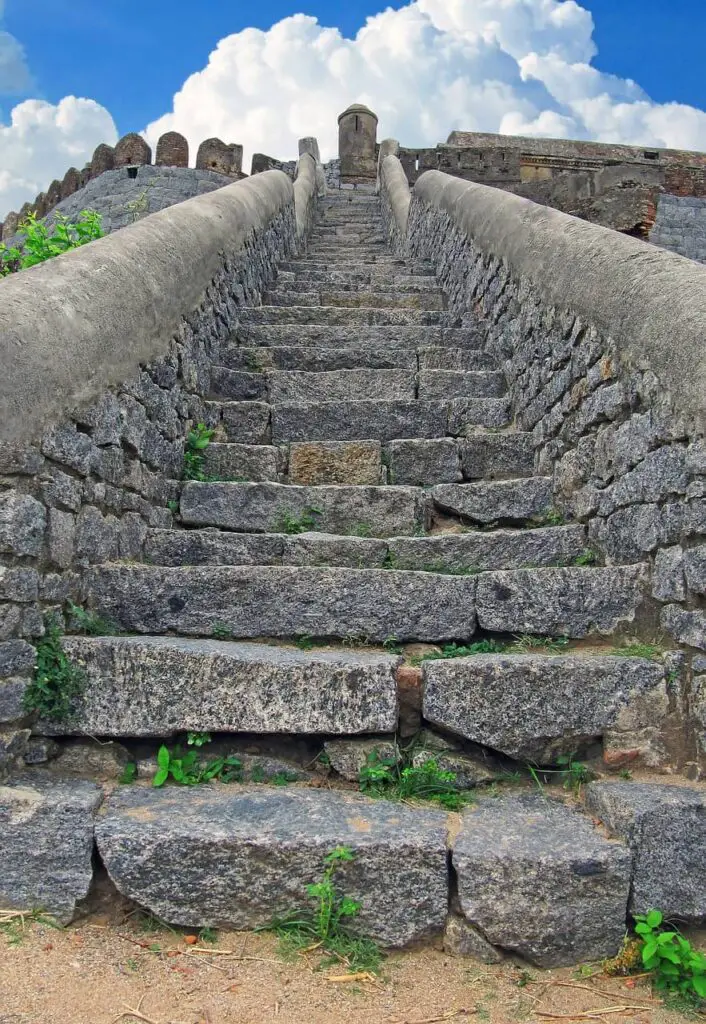Landscaping rocks can transform your garden into a picturesque oasis, providing beauty and functionality.
They serve various purposes, from reducing water consumption to minimizing the area that needs mowing.
However, the unwelcome intrusion of weeds can mar the beauty of your rock garden.
In this comprehensive guide, we’ll explore the best practices and materials to put under rocks to prevent weeds and maintain the allure of your outdoor space.

What to Put Under Rocks to Prevent Weeds?
Before delving into the materials to place under rocks for weed prevention, it’s crucial to take some initial steps to create a weed-free foundation.
Spray with Herbicides:
Begin by choosing the right location for your rocks. Ideally, select an area without existing weeds.
If weeds are present, dig them out and remove the roots. You can also use herbicides, but exercise caution to protect nearby plants.
Cover them with cardboard or plastic during spraying.
Wear protective gloves and a mask when using herbicides to ensure personal safety.
Vinegar:
Household white vinegar can help eliminate weeds, but for a more effective solution, consider horticultural vinegar, available in supermarkets or online.
Water:
Avoid simply watering the weeds, as this can stimulate their growth. Instead, use boiling water to destroy them. Exercise caution to prevent burns, especially for large areas.
Materials to Prevent Weed Growth Under Rocks
With a weed-free foundation established, let’s explore the materials that can be effectively placed under rocks to prevent weed growth.
Plastic:
Black plastic sheets are highly effective in preventing weed growth.
Large quantities are available, making it suitable for extensive coverage without overlapping pieces.
Plastic is environmentally unfriendly.
Impermeable nature can hinder water access to surrounding plants, potentially leading to drying out.
Difficulty in removal.
Mitigation:
Drill holes in the plastic sheet to ensure water and air reach the soil for plant development.
Landscape Fabric:
More expensive than plastic but offers several benefits.
Allows water and air flow while preventing rocks from sinking into the ground.
Comes in various types: perforated, spun, and woven.
Lightweight and easy to handle, it comes in rolls.
Does not provide permanent weed prevention; reapplication may be necessary after a few years.
Cover with rocks and fasten with staples for stability.
Use mulch, like stone or bark chips, to hide the fabric.
Newspapers and Cardboard:
Cost-effective and almost free. Suitable for short-term weed control and degrades relatively quickly.
But it decomposes rapidly, leading to rocks sinking into the ground.
Colored newspapers may contain ink chemicals undesirable for soil health.
Arrange in layers, ensuring overlap to minimize weed growth in gaps.
Ideal for small areas but may require regular replacement.
Choosing the Right Material for Your Garden
The choice of material to put under rocks for weed prevention depends on various factors, including personal preferences, environmental considerations, and the size of the area to be covered.
Here’s a breakdown of factors to help you make an informed decision:
Environmental Impact:
Plastic: Not environmentally friendly due to difficulty in disposal.
Landscape Fabric: Offers a middle-ground option, considering both environmental impact and effectiveness.
Newspapers and Cardboard: Environmentally friendly but may require frequent replacement.
Effectiveness:
Plastic: Highly effective but challenging to remove.
Landscape Fabric: Offers good effectiveness with the advantage of allowing water and air flow.
Newspapers and Cardboard: Cost-effective but suitable for short-term weed control.
Cost:
Plastic: Typically more expensive.
Landscape Fabric: Middle-ground option in terms of price and quality.
Newspapers and Cardboard: Cost-effective and almost free but may require regular replacement.
Maintenance Tips for a Lasting Solution
While the materials discussed can significantly reduce weed growth, it’s essential to recognize that no solution provides permanent weed prevention. Here are some maintenance tips to ensure the longevity of your weed prevention efforts:
Regular Inspection:
Periodically inspect the area under the rocks for signs of weed growth.
Be proactive in addressing any emerging weeds promptly.
Reapplication:
Understand that landscape fabric and even the most effective materials may need reapplication after a few years.
Wind-carried weed seeds and organic material buildup can contribute to weed resurgence.
Soil Preparation:
Ensure proper soil preparation before placing rocks and weed prevention materials.
Add compost to enrich the soil, providing a conducive environment for your plants.
Tailored Solutions:
Consider the specific needs of your garden. For small areas, newspapers or cardboard might suffice, allowing for manual weed removal.
Larger areas may benefit from the effectiveness of plastic or landscape fabric.
Conclusion
Creating a weed-free haven under rocks involves a thoughtful selection of materials based on your preferences, environmental considerations, and the size of the area.
While each material has its advantages and disadvantages, the key lies in proper implementation and ongoing maintenance.
If you prefer a chemical-free approach and are dealing with weeds in small areas, newspapers or cardboard may be a cost-effective solution. For larger areas where a more robust and lasting solution is required, plastic or landscape fabric may be the preferred choices.
Remember, a beautiful garden requires attention and care. By choosing the right material and implementing proactive maintenance, you can enjoy the allure of your rock garden without the intrusion of weeds. So, take the time to assess your garden’s needs, and embark on the journey to create a weed-free outdoor sanctuary.
